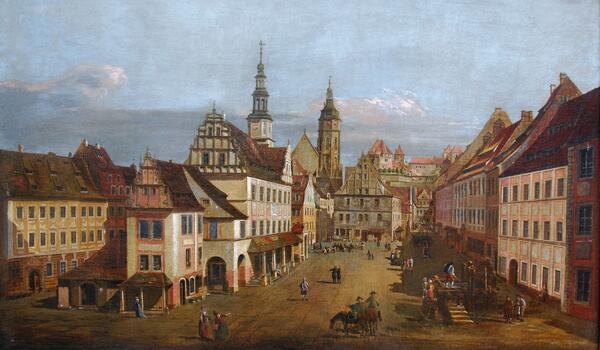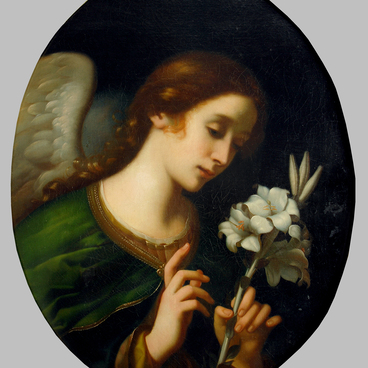In the 18th century, the genre of landscape was developing, with a variety of its subgenres emerging. In the collection of the Primorye State Art Gallery, there is an urban landscape by an unknown artist — “The Marketplace at Pirna” — a copy from the work of the Venetian painter Bernardo Bellotto.
Bernardo Bellotto was born in Venice. He studied with his uncle, the famous master Antonio Canaletto, the head of the Venetian school of Vedutists. Bernardo Bellotto also received the nickname Canaletto, which often leads to confusion. Bellotto’s works are distinguished by pedantry, descriptiveness, and some dryness. The artist traveled a lot; in addition to Venice, he worked in Dresden, Warsaw, and briefly came to St. Petersburg.
Veduta is a genre of urban landscape, characterized by documentary accuracy in depicting architecture and everyday life. The heyday of the genre is associated, among other things, with the use of a pinhole camera — a device in the form of a box with a system of mirrors, which allowed artists to obtain an optically accurate image, which facilitated the work process.
In the 18th century, vedute were extremely popular among collectors and visitors to Venice. Children of European aristocrats, traveling around Europe as part of grand tours, would purchase urban landscapes as a souvenir. Due to the high demand, many paintings were then reproduced in etchings. The Venetian school is characterized by the predominance of pictorial principles, bright color choices, and proficiency in using the expressive techniques of oil painting.
The peculiarity of Bernardo Bellotto’s painting is that he depicted the views of the cities, which he visited, very scrupulously, conveying all the details of the building. After the Second World War, Bernardo Bellotto’s vedute were used for recreating the historical appearance of the destroyed ancient cities of Europe.
Pirna is a city in Germany, located on the Elbe River. From 1753 to 1755, Bernardo Bellotto made eleven paintings with views of the city. The original canvas, from which the copy from the gallery collection was made, is kept in the Old Masters Picture Gallery in Dresden.
Bernardo Bellotto was born in Venice. He studied with his uncle, the famous master Antonio Canaletto, the head of the Venetian school of Vedutists. Bernardo Bellotto also received the nickname Canaletto, which often leads to confusion. Bellotto’s works are distinguished by pedantry, descriptiveness, and some dryness. The artist traveled a lot; in addition to Venice, he worked in Dresden, Warsaw, and briefly came to St. Petersburg.
Veduta is a genre of urban landscape, characterized by documentary accuracy in depicting architecture and everyday life. The heyday of the genre is associated, among other things, with the use of a pinhole camera — a device in the form of a box with a system of mirrors, which allowed artists to obtain an optically accurate image, which facilitated the work process.
In the 18th century, vedute were extremely popular among collectors and visitors to Venice. Children of European aristocrats, traveling around Europe as part of grand tours, would purchase urban landscapes as a souvenir. Due to the high demand, many paintings were then reproduced in etchings. The Venetian school is characterized by the predominance of pictorial principles, bright color choices, and proficiency in using the expressive techniques of oil painting.
The peculiarity of Bernardo Bellotto’s painting is that he depicted the views of the cities, which he visited, very scrupulously, conveying all the details of the building. After the Second World War, Bernardo Bellotto’s vedute were used for recreating the historical appearance of the destroyed ancient cities of Europe.
Pirna is a city in Germany, located on the Elbe River. From 1753 to 1755, Bernardo Bellotto made eleven paintings with views of the city. The original canvas, from which the copy from the gallery collection was made, is kept in the Old Masters Picture Gallery in Dresden.



